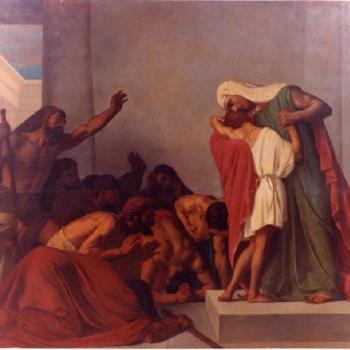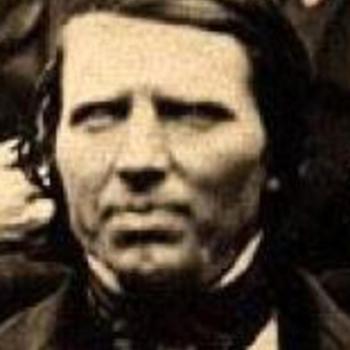
When I moved to Germany, I was invited to take part in a pioneering project to map interreligious dialogue (IRD) efforts across the country.
In the aftermath of the 10th World Assembly of Religions for Peace in Lindau in August 2019, a group of colleagues got together to pursue the idea of an interreligious cartography in Germany. The goal was to make a comprehensive survey of local, national, and international interreligious initiatives and actors in German municipalities to serve as a reference for future research.
Through our investigation, we gained a clearer picture of what IRD looks like in Germany and who is taking part. From Bonn to Berlin, Flensburg to Freiburg, one of the things that became evident was that many of the local initiatives involved, or were led by, religion scholars and academic theologians. Based on my own research and experience, this holds true in the U.S. and elsewhere, with scholars often actively involved in IRD efforts at the local, regional, national, and international levels.
As I reflected on this, I pondered a few questions: Are religious studies and IRD natural companions or should they be carefully delineated and divided? Should those who study religion lead the way when it comes to multi-religious responses to the world’s pressing issues? Or, as some argue, should IRD remain an object for critical study and not participation?
Are we critics, caretakers, or “critical caretakers?”
Some might immediately assume that the study of religion goes part and parcel with IRD and efforts at peacemaking between religious actors across the globe.
In my own experience, numerous students told me they were motivated to learn more about religion in part because of conflicts — real or perceived — between the world’s faith traditions. Or they saw it as a possibility to increase their own religious literacy and be better prepared for interreligious engagement.
Likewise, there are religion scholars who feel they are contributing, at least in some way, to understanding between religious actors and institutions through their research and writing.
However, there have been numerous, vocal critiques of what may at first appear to be a natural pairing. Among them is Russel T. McCutcheon, Professor of Religion at the University of Alabama. In his book Critics not Caretakers: Redescribing the Public Study of Religion and elsewhere, McCutcheon has argued that it is not the religion scholar’s task to take part in IRD, but to take its activities into consideration as an object of critical study and reflection.
He wrote:
“The scholar of religion qua critic has no interest in determining which social formation is right or true or just or best and she does not practice conflict management. Instead, she is an equal opportunity historicizer, taking all claims far more seriously than a caretaker might, for she starts from the position that “justice” and “freedom” and “peace” and “holism” are utterly plastic, rhetorical tools used by virtually all social actors, in countless ways, often in pursuit of directly competing goals.”
This is not an isolated critique. Elsewhere, others have questioned whether a religion scholar’s credentials qualify them to make claims in the IRD space. Still others question IRD’s boundaries and basis, which take certain orthodoxies and religious groupings at face value and seem to exclude “nones” (those with no professed religion).
This critical take on the religion scholar’s role in IRD has not gone unchallenged. Scholars like Atalia Omer at the University of Notre Dame have argued for a “critical caretaker” approach, wherein those who study religion can offer “problem-oriented” engagements with religious histories, memories, and theologies. Still others emphasize religion scholars should be in dialogue with the people they study and to not do so would be unethical.
What is gained from taking IRD as object of study?
What is to be discovered if IRD is analyzed from the perspective of religious studies? What might we learn about IRD if it is historicized and theorized as an object of critical analysis?
We might, for example, examine how actors and institutions engage in dialogue. What methods do they use? What models are they employing? What are the practical ends they seek? How do they define the constituent terms involved? Who is invited to the table? Who is not? Where are they convening and what role does that have to play in the dialogue they share? What contextual factors are at play and how do they shape the conversations that occur? How has IRD — or “interfaith dialogue,” as it is sometimes known — been interpreted, applied, promoted, or hindered across time and in various localities? What are the limits and possibilities of the peace, shared understanding, and tolerance that such dialogue sets out to achieve? How do those who gather around the dialogue table define these terms and how does that determine the people they involve, the conversations they have, and goals they pursue?
In the end, IRD is a human activity. As such, it should be studied and critiqued for how it is part of broader orders of societal management and governance. We should be asking why self-identified religious actors gather to engage in dialogue, what the stated aims and objectives of such initiatives are, and how we might better situate such efforts within their political, economic, social, and theological context.
But, perhaps ironically, the results of this research may, in turn, prove beneficial to IRD practitioners. As someone who both studies religion and takes part in IRD — two roles I see as distinct, yet related — I would argue that a more thorough, and critical, understanding of how IRD efforts are defined, carried out, and contextualized, is advantageous to those who engage in IRD or adopt a multi-religious approach to address critical issues of our time.
IRD has been the subject of much critique over the years. Some question the possibility of meaningful IRD “given the embedded of those situated in particular religious traditions and the consequent challenge of accurately translating concepts and doctrines from one tradition into language and ideas that can be fully appreciated by another.” Others wonder whether IRD’s constituent terms bar the participation of the non-religious or mask the implicit diversity contained within blanket categories like “Hindu” or “Indigenous” traditions. Still others critique IRD for being “mission” in all but name, with participants simply trying to convert others to their cause or custom. In his book, scholar and IRD practitioner Muthuraj Swamy, complained that IRD too often remains “an elite project that reinforces and in some cases constructs the very boundaries it seeks to bridge.” This has led some to suggest we talk about “religious diplomacy,” “intercultural dialogue,” or “interhuman dialogue” instead.
These are all worthwhile critiques. Although religious studies and IRD are separate disciplines, each with their own goals and definition problems, they can be mutually reenforcing. The field of IRD — or whatever we might call it — benefits from the critical conversation around what it is, who it involves, and to what ends it operates.
Inviting religion scholars to critically historicize, analyze, and theorize its aims and activities should not be spurned, but welcomed.
Everyday pluralism and its problematics.
The cartography project in Germany is a great example. Mapping, providing demographic details for, and comparing efforts at understanding among competing or conflicting groups is a legitimate area of research.
In a world of almost constant cosmopolitan encounter, IRD can contribute to understanding and social cohesion. At the same time IRD, and the actors involved, can also hinder these processes.
Thus, IRD should not be free from critical appraisal or rigorous contextualization and analysis. Nor should those who study religion simply assume they are contributing to interreligious understanding by doing the research they do.
If the goal is to build relationships and create a sense of mutual belonging in a diverse and changing landscape, religion scholarship can help IRD practitioners get a better sense of that landscape by engaging in rigorous reflection on specific local ecologies and context-specific cases.
Using the tools of religious studies will help them better understand the deeper "chaotic, complicated reality" of "everyday pluralism” as well as its limitations.
While it may not make for a better world – or an always comfortable, or natural, pairing – it may help us see how (and why) our efforts over the years have so often failed.
For further reading:
•Explore Interfaith America’s “Bibliography for Interfaith and Interreligious Studies.”
3/30/2023 10:15:38 PM





